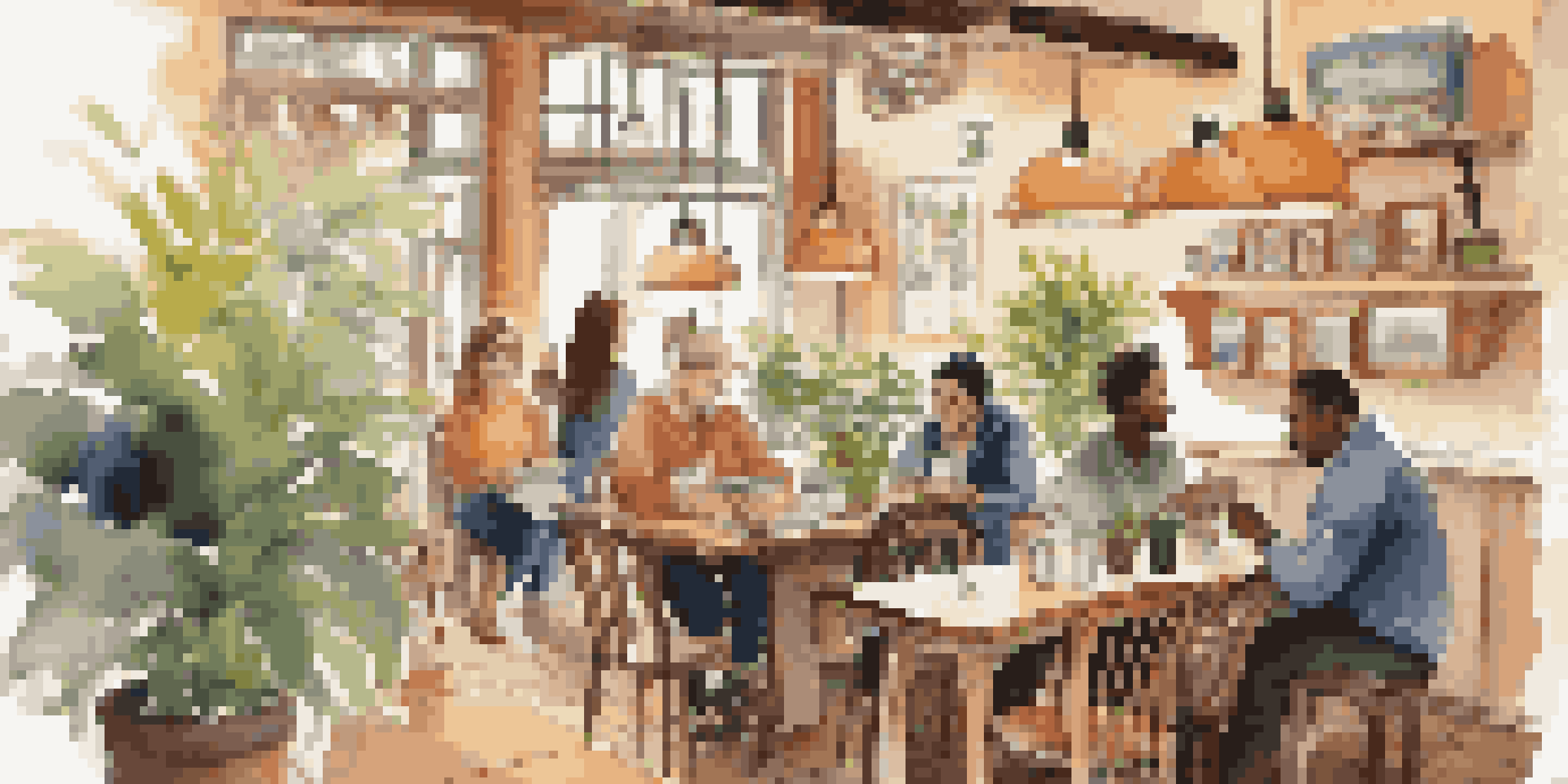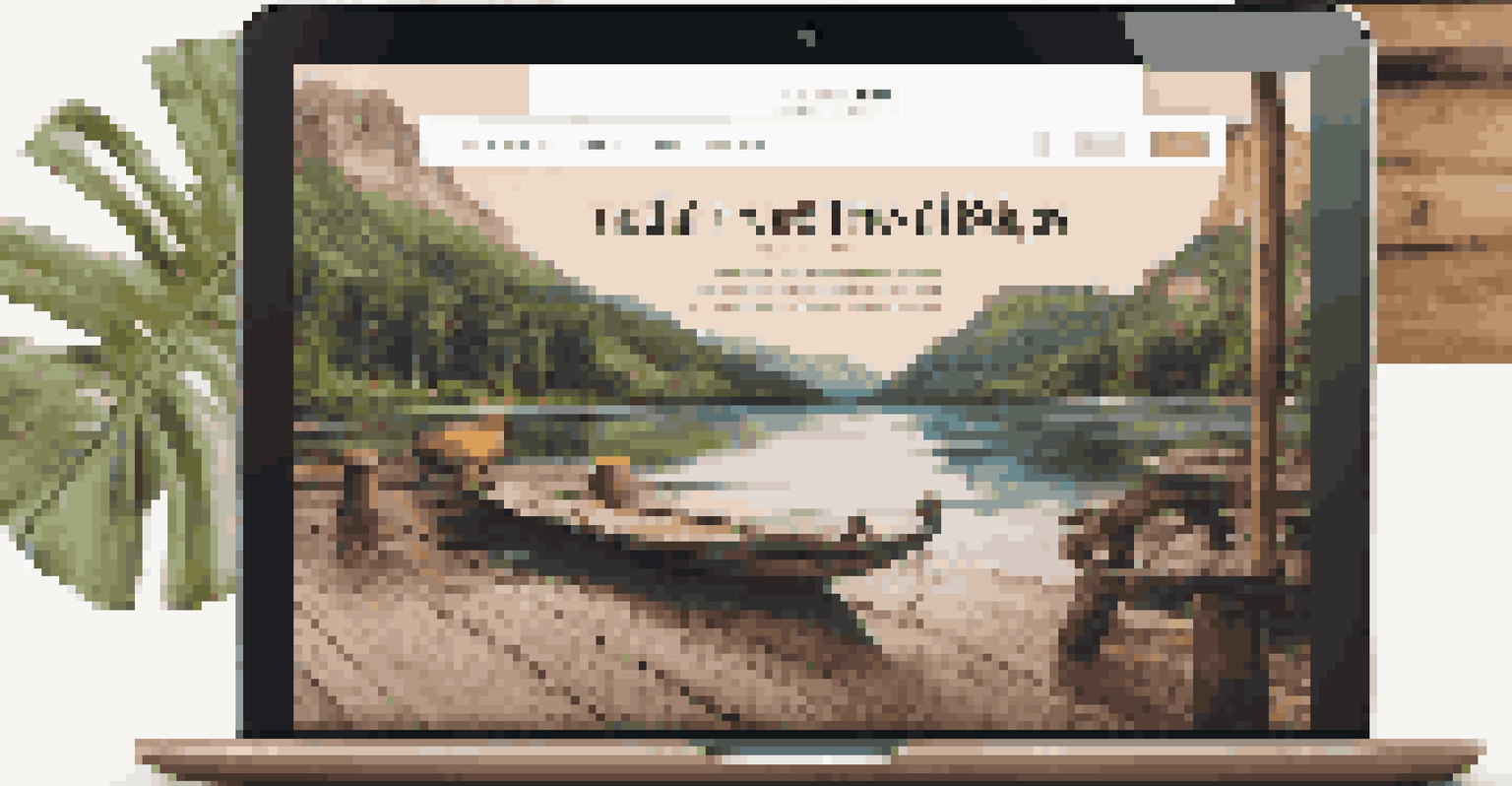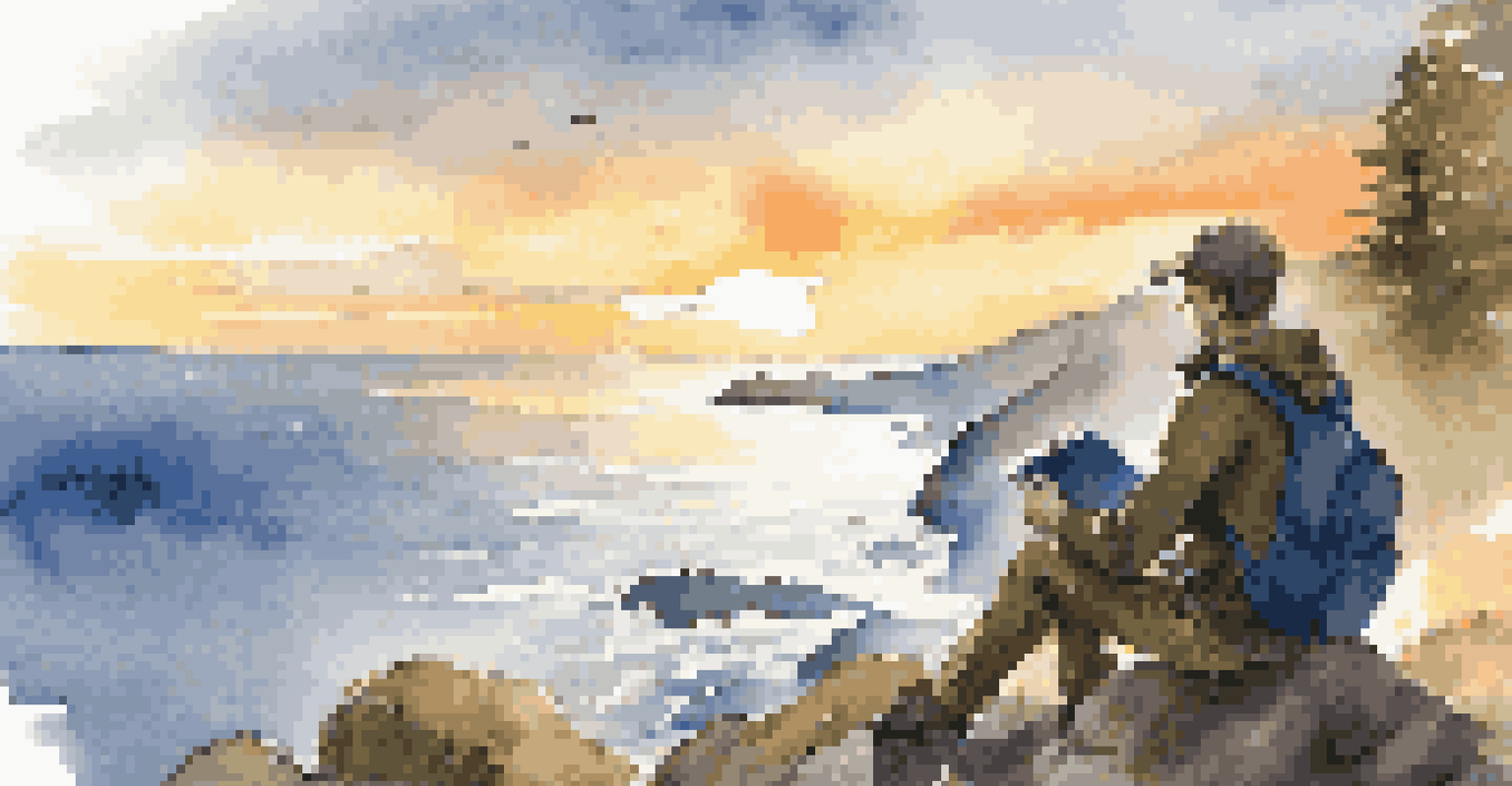Creating a Welcoming Travel Blog Layout for Readers

Understanding the Importance of Blog Layout
A well-organized blog layout is crucial for keeping readers engaged. When visitors land on your travel blog, the first impression often hinges on the layout. A clutter-free, visually appealing design invites them to explore further.
Design is not just what it looks like and feels like. Design is how it works.
Think of your blog layout as a map for travelers; it guides them through your content. Just like a well-planned itinerary, it should be easy to navigate and enjoyable to experience. This encourages readers to stay longer and discover more.
Furthermore, an effective layout can enhance readability, making it easier for your audience to absorb your stories and tips. Ultimately, a welcoming design fosters a sense of community, inviting readers to return for future adventures.
Choosing a Clean and Simple Design
Simplicity is key when it comes to a travel blog layout. A clean design minimizes distractions, allowing readers to focus on your content. Uncluttered spaces, ample white space, and a limited color palette can make your blog feel more inviting.

Imagine walking into a cozy café versus a chaotic diner; the former encourages you to relax and enjoy your time. Similarly, a simple design can evoke a sense of calm, making your readers feel at home. This sets the stage for an enjoyable reading experience.
Effective Blog Layout Engages Readers
A well-organized and visually appealing layout invites readers to explore and stay longer on your blog.
Remember, less is often more. By prioritizing essential elements and reducing unnecessary clutter, you create a welcoming environment where your travel stories can shine.
Utilizing Clear Navigation Menus
A clear navigation menu acts as a roadmap for your readers. It helps them find what they're looking for without any frustration. By categorizing your content—such as destinations, tips, and personal journeys—you make it easy for visitors to explore.
Content is fire; social media is gasoline.
Consider using drop-down menus for subcategories, allowing for a more organized approach. This way, readers can quickly access specific content, like travel guides or photo essays. A well-structured menu reduces the chances of readers getting lost in your blog.
In essence, clear navigation enhances user experience and encourages exploration. When readers can easily find their way around, they’re more likely to stick around and engage with your content.
Incorporating Engaging Visuals
Travel is inherently visual, so incorporating engaging images is essential. High-quality photos can draw readers in and complement your written content beautifully. They evoke emotions and transport your audience to the places you’ve visited.
Think of visuals as the seasoning in a recipe; they enhance the overall flavor of your blog. Use a mix of images, videos, and infographics to create a rich, dynamic experience. This not only makes your blog visually appealing but also keeps readers interested.
Clear Navigation Enhances User Experience
Utilizing a clear navigation menu helps readers easily find content, encouraging them to engage more with your blog.
Remember to optimize your images for web use to ensure fast loading times. A well-balanced mix of visuals can elevate your content and make your travel blog a feast for the eyes.
Creating Readable and Scannable Content
Readability is a cornerstone of a successful blog layout. Use short paragraphs, bullet points, and subheadings to break up text, allowing readers to scan your content easily. This approach caters to the way many people consume information online today.
Imagine trying to read a dense novel versus a magazine with engaging snippets; the latter is much more inviting. By structuring your posts for quick scanning, you can capture readers' attention and encourage them to delve deeper into your stories.
Additionally, consider font size and style; ensure that your text is easy to read across different devices. A reader-friendly layout invites more people to engage with your travel experiences.
Mobile Responsiveness is Essential
With more people accessing blogs on their mobile devices, a responsive design is no longer optional. Your travel blog should adapt seamlessly to various screen sizes, maintaining its appeal and functionality. This ensures a positive experience for all readers, regardless of how they visit.
Think of it like a travel guide that fits in your pocket; it needs to be convenient and accessible. A responsive layout adjusts images and text, allowing for easy navigation on smartphones and tablets. This caters to your audience's needs and encourages them to explore more.
Visuals and Personal Touch Build Connection
Incorporating engaging visuals and personal anecdotes fosters authenticity and deeper connections with your audience.
Incorporating mobile responsiveness not only broadens your reach but also shows that you care about your readers' experience. A layout that works well on all devices keeps readers returning for more.
Adding Personal Touches for Authenticity
A travel blog is more than just information; it's a reflection of your personality and experiences. Adding personal touches, such as anecdotes or unique insights, helps create a connection with your readers. This authenticity makes your blog feel like a conversation rather than a lecture.
Think of it as hosting friends at your favorite travel destination. Sharing personal stories and tips makes the experience more relatable and enjoyable. Readers appreciate your perspective and are more likely to return to hear more of your journeys.

Incorporating your voice and style into the layout, whether through design elements or writing tone, makes your blog distinctive. This personal touch fosters loyalty and builds a community around shared experiences.
Encouraging Interaction and Feedback
Engagement is vital for a thriving travel blog, and your layout can encourage interaction. Incorporate comment sections, social media sharing buttons, and email subscriptions to foster a sense of community. When readers feel they can connect with you, they’re more likely to engage.
Think of your blog as a lively café where visitors can share stories and recommendations. Encourage readers to leave comments, ask questions, or share their own travel experiences. This interactive element can transform your blog into a vibrant space for discussion.
Additionally, responding to comments and feedback shows that you value your readers' input. Creating a welcoming environment for interaction not only enhances the experience but also strengthens your relationship with your audience.